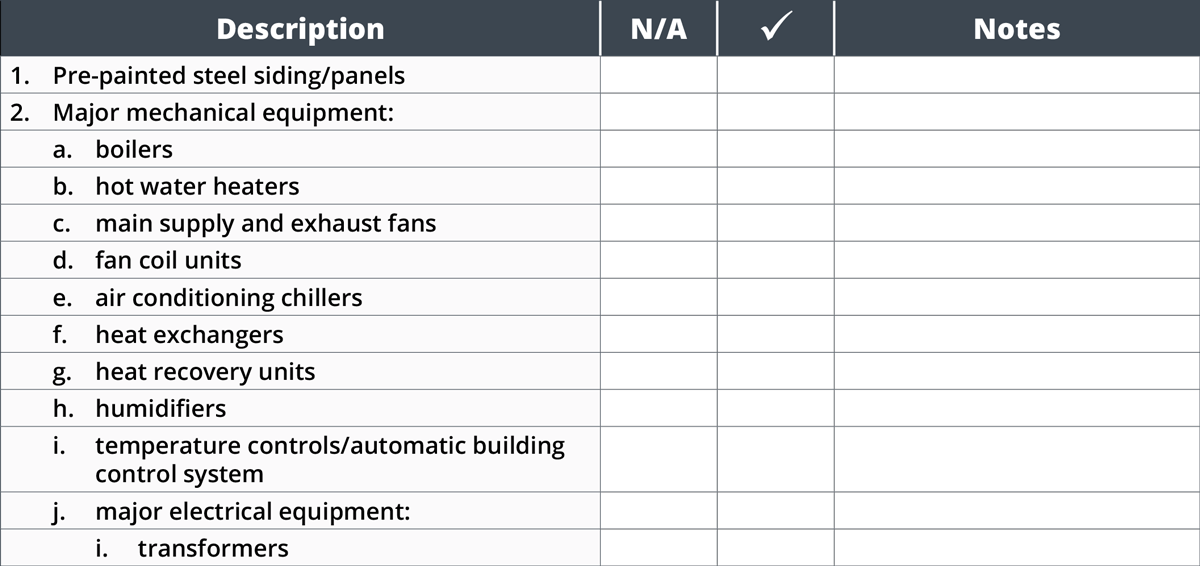Building codes require that the durability and performance of products and systems be considered in design and incorporated into the construction of buildings. Some major components of a new building do not last as long as others. The durability of built components and systems is highly dependent on building design, type, height, regional location and other factors. This fact should be addressed during the design, code analysis, and life cycle cost analysis that is usually carried out during the pre-design stage. Although not all projects go through a life cycle cost analysis in the pre-design stage, building code analysis is required and evaluation of durability requirements early in the project will reduce the risk of late design and construction changes. Such an analysis is important in making management decisions for the facility once it has been completed and occupied.
The prudent owner will plan and budget for upgrading or replacing these major components over the mid-term or long term of the building’s projected useful life, thus ensuring that adequate funds will be available when major expenditures are needed. Unfortunately, too many institutions owning a large number of aging buildings face huge maintenance or replacement costs for which little or no funding is available within their operating budgets. The following checklist provides a general indication of the building components which the building owner should monitor on a routine basis. The owner should also budget for and set aside funds for their upgrading or replacement.
The life of these major components is not easily predictable and depends on many factors, including the quality of the product selected, routine maintenance, intensity of use or loading, wear and tear, severity of local weather conditions, and so on. Manufacturers’ claims for their products cannot always be relied upon, although when warranties are offered or specified, they are likely to indicate the low end of a product’s life expectancy. Electronic products are now common in controls for mechanical and electrical systems, and although they may not wear out quickly, they are vulnerable to rapid obsolescence.
Under Five Years
Five to 10 Years
Ten to 20 Years
Twenty to 30 Years
References
Chown, G.A. “Requirements for durability and ongoing performance in Canada’s objective-based construction codes.” Canadian Codes Centre, Institute for Research in Construction, National Research Council Canada, 1999. https://nrc-publications.canada.ca/eng/view/accepted/?id=76484400-489e-4118-a427-6471302905af,
accessed June 9, 2020.




